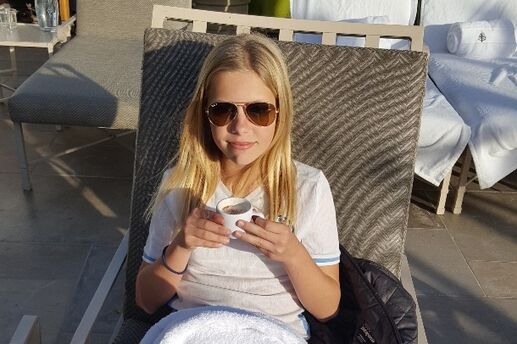Custom-blended Perfume Scents

Before you head to the perfume counter for a new fragrance, consider creating a custom-blended scent. Like your favorite long-strand necklace or your studded black leather belt, a custom perfume is the ultimate way to express your personal style.
Thanks to a growing number of fragrance bars, online scent boutiques and scent-making parties, every woman can try her hand -- and nose -- at being a perfumer. “A custom blend can be a very simple, lovely accord that works nicely,” says The New York Times perfume critic Chandler Burr. It can also serve as a signature scent for a special occasion like your wedding day or a romantic vacation.
Do-it-yourself
Scent Creation
The first step in creating a
custom blend is identifying the aromas that appeal to you. Do you like
the feminine smell of florals, or do you prefer a fresher, fruity scent?
Do woody notes of bark or moss entice your senses, or are the exotic
smells of spices like musk or vanilla more your thing?
To try different fragrance oils, visit a local fragrance bar, a market like Whole Foods or a bath and body shop. Most perfumers work with synthetic fragrance oils and natural essential oils extracted from plants and flowers. You can also order sample oils online at ScentDesign.net or SaludSpaBar.com. Small vials will cost between $3 and $10.
With your oils at hand, start by testing single scents to get a feel for the different fragrances, suggests Salud’s founder and chief perfumer, Kelly Podorsek. Dip a paper scent strip into the vial, and then take a whiff. (When your nose needs a rest, a deep sniff of coffee beans will clear any lingering scents.) After you’ve found a few favorites, start layering the different oils on one strip to see how they blend together. “Stick with three or four scents, at the most,” says Podorsek.
Podorsek suggests combining scents from different fragrance families to create a layered scent. For example, grapefruit (fruity), honeysuckle (floral) and a touch of sandalwood (woody) work well as an enticing blend. Or go simple, fresh and fruity with cucumber and melon. Custom scents can also recreate favorite memories. An avid wine lover, Podorsek recently blended black peppercorn, summer berries and musky leather to evoke the aroma of a fine Syrah.
Once
you’ve produced a pleasing concoction, you’ll need
to sample your creation on your own skin. “The pH balance of
the skin, diet, even humidity and heat around that skin affect the way
perfumes smell,” explains Burr. If you’re pleased
with the results, carefully combine the different oils into a glass
bottle using individual droppers. Or, have your selected oils
professionally mixed by a perfumer in a store or online. A pure
fragrance or essential oil formulation can range from $10 to $25 for 1/3
ounce.
Working With a
Perfumer
Creating a custom perfume with a
perfumer is a far more intricate (and expensive) process than doing it
yourself. “Perfumery is an art form,” says Alexandra
Balahoutis, a botanical perfumer who founded Strange Invisible Perfumes
in Venice, Calif. To capture the essence of a person in a custom
perfume, Balahoutis begins by meeting the client to discuss favorite
flowers, teas, wine, spice, art, literature and more.
“It’s like having a portrait painted,” she
explains.
Balahoutis works with authentic essences from plants, rather than synthetic essences. Once she creates a perfume formula, it is aged and tweaked until she is able to achieve the perfect balance of scents. The process takes about six months to complete and starts at $6,000.
Scents evoke memories more than any other sense can, so whatever appeals to each of us about a fragrance may be tied to fond memories, such as a childhood trip to the South filled with the lingering fragrance of gardenias. While you may not create a masterpiece on the scale of a high-end fragrance, a custom-blended scent can capture what’s truly unique about you.


